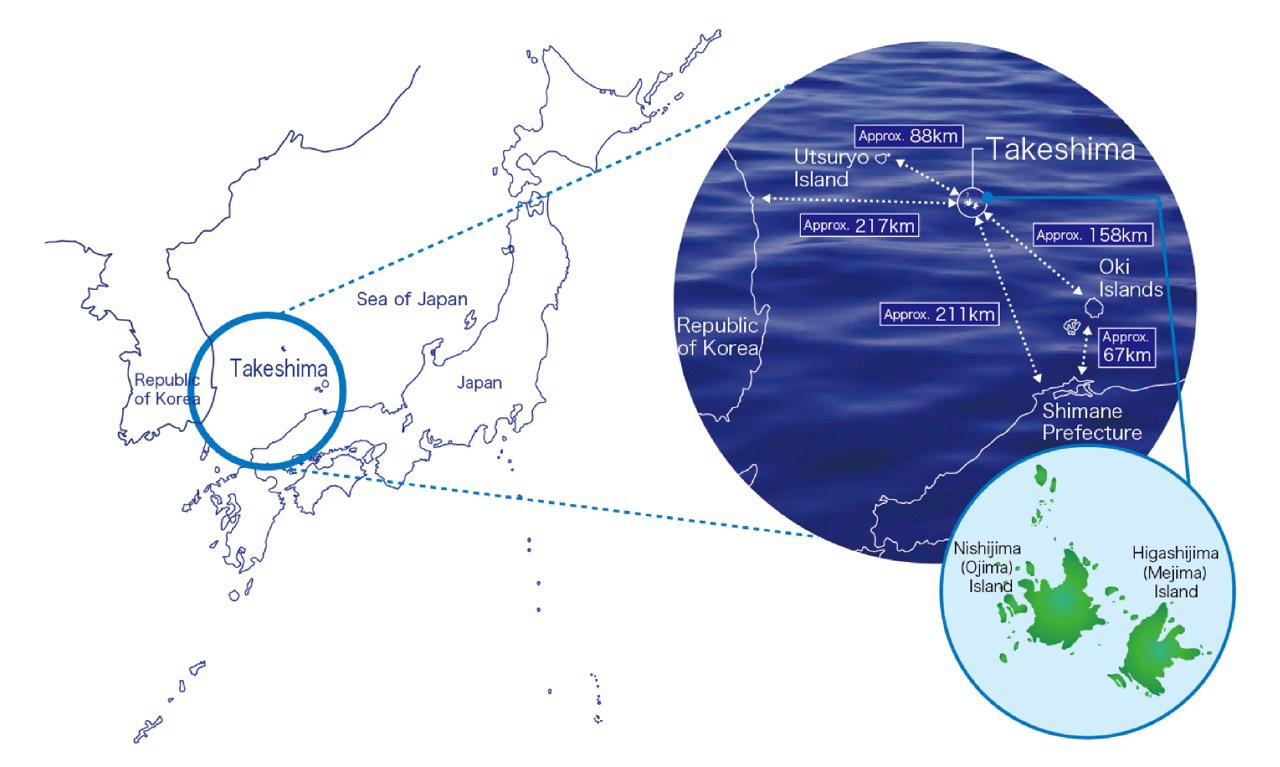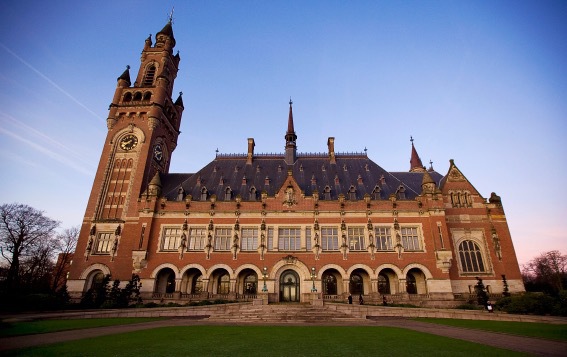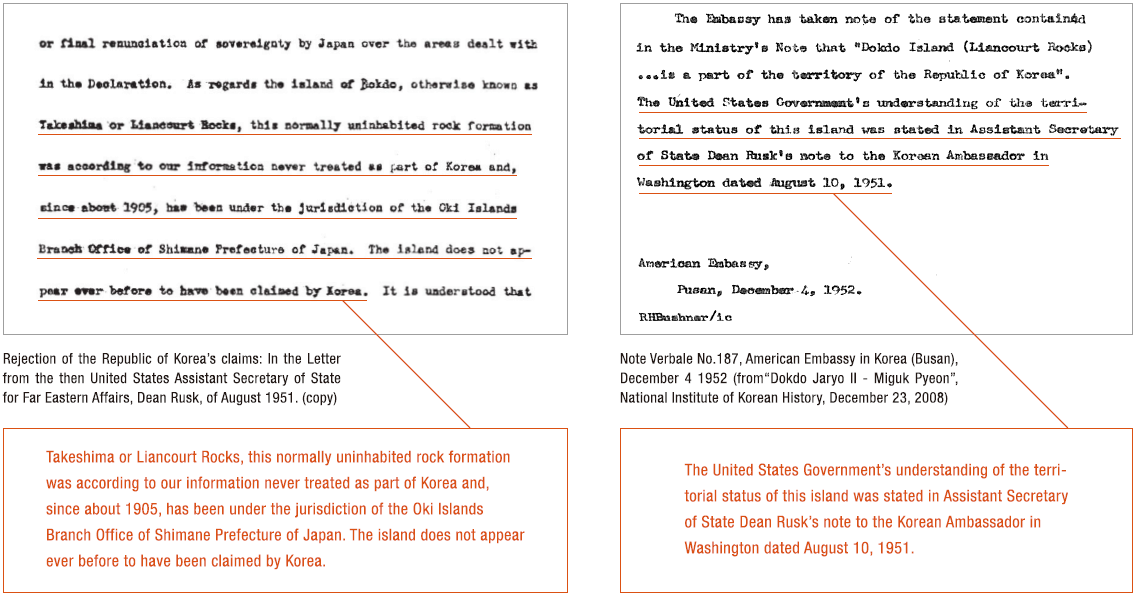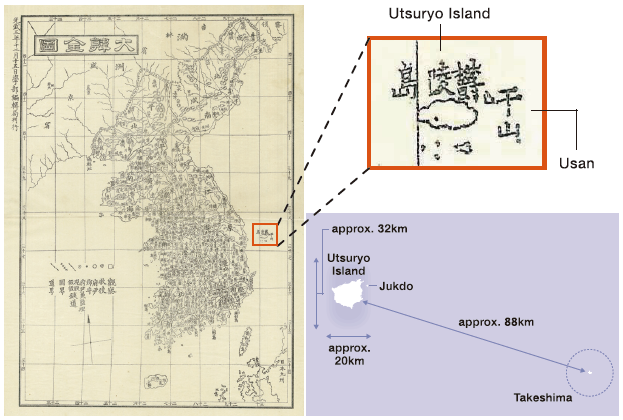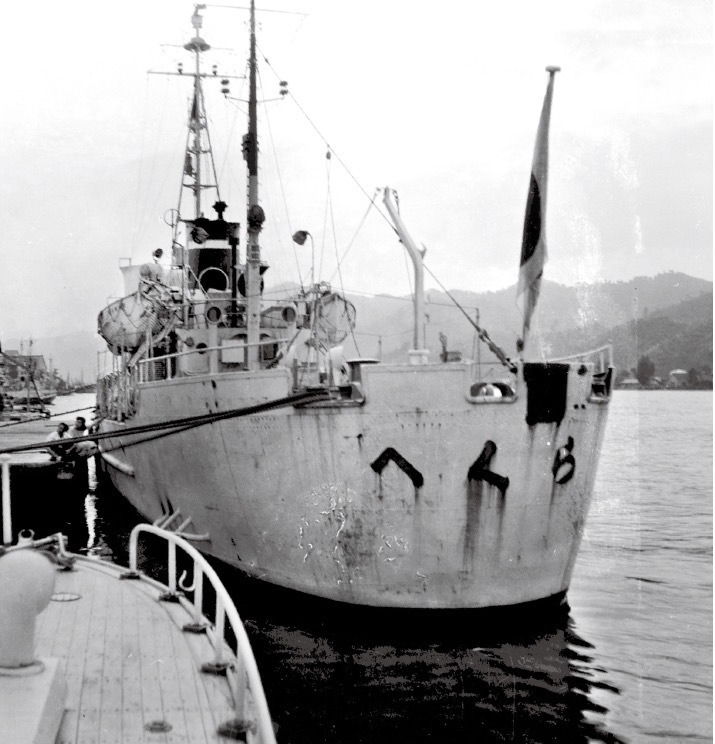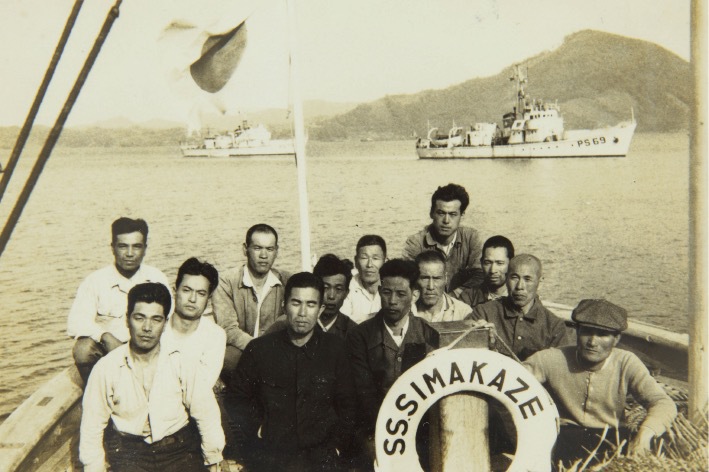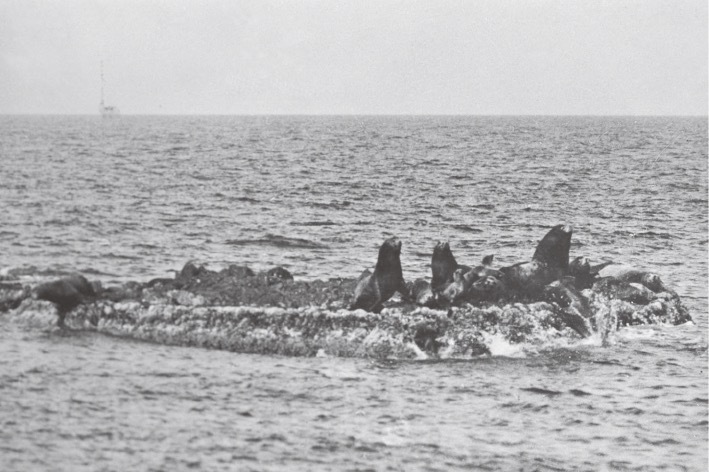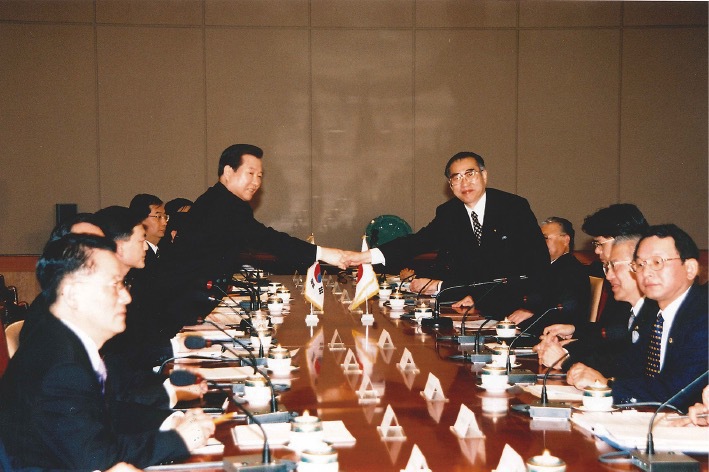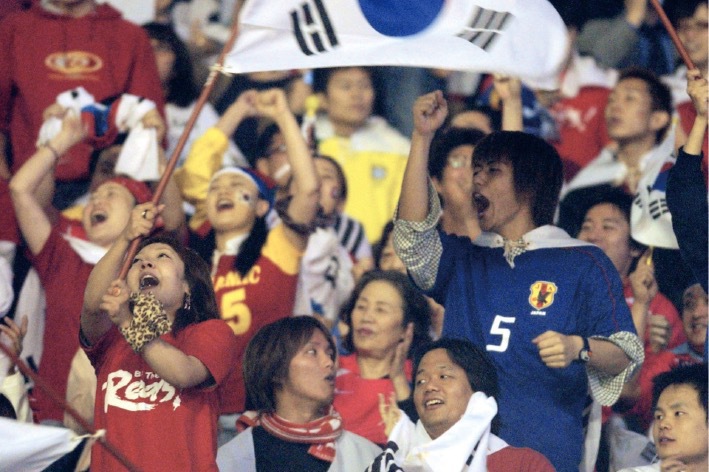Japan’s claim over Takeshima is often portrayed by the Republic of Korea (ROK) as tantamount to the repetition of the “same course of aggression” as in the prewar history “culminating in the annexation of the whole of Korea into Japan” challenging the fact that the islands “were restored as Korean territory after World War II.”(*1) Is it true? Is Japan challenging the postwar international order? Let us examine this question.
(*1) “Dokdo – Korea’s Beautiful Island”, Ministry of Foreign Affairs, Republic of Korea.
1. Japan is pursuing its claim in a manner complying with the rules of Postwar International Order
First, it is important to note that Japan’s pursuit of a solution to the Takeshima issue has consistently been undertaken complying with the rules of the postwar international order including the Charter of the United Nations. In other words, Japan has consistently advanced its claim peacefully and on the basis of international law, not by unilateral use of force. To this end, Japan proposed to refer this case to the International Court of Justice on no less than three occasions since 1954; on each occasion, Japan’s proposal was rejected by the ROK. Japan has never resorted to, and will never use force or threats in seeking the resolution of any issue, including the Takeshima issue.
Continuing to claim Takeshima for the past 60 years, however, has not prevented Japan from establishing close ties and friendship with the ROK. Japan normalized its relations with ROK in 1965. The two countries have worked together since to overcome a number of common challenges, including the Asian financial crisis that hit the region, including the ROK, in the late 1990s. The two neighbors successfully co-hosted the 2002 FIFA World Cup, which was a symbolic event showcasing to the world the national strength (and soccer skill!) of both countries, as well as the friendship between the Japanese and Korean peoples. Japan strongly believes that individual issues including Takeshima must not detract from the broader picture of Japan’s relationship with its most important neighbor.
2. Japan is seeking a Realization of the Postwar International Order
Second, it may be useful to go over the sequence of events, whereby Takeshima had been confirmed as Japanese territory in the San Francisco Peace Treaty and then, had illegally been occupied by the ROK. Therefore, it is a realization of the legitimate title based on the postwar international order that Japan is pursuing.
The San Francisco Peace Treaty, which is the very basis of Postwar Order in East Asia, did not include Takeshima in the territory to be renounced by Japan, confirming that it remains part of Japanese territory. This point is clearly confirmed in such public documents as the letter from then U.S. Assistant Secretary of State Dean Rusk to the ROK government, dated August 10 1951. At a time when the text of the treaty was being finalized, he explicitly stated that Takeshima had been under Japanese jurisdiction and that the territory was “never treated as part of Korea,” and that “[t]he island does not appear ever before to have been claimed byKorea.”
It was therefore only natural that, after the entry into force of the San Francisco Peace Treaty in April 1952, the United States treated unequivocally Takeshima as part of Japan. In July 1952, the Japan-U.S. Joint Committee (a consultative body joining the Japanese and U.S. governments) agreed to designate Takeshima as a bombing range for the U.S. forces in Japan. The Joint Committee subsequently decided to remove the designation in March 1953 to allow Shimane Prefecture fishermen to continue fishing in the area. It goes without saying that these joint actions on the part of the U.S. and Japanese governments, by definition, could only be based on a shared assumption that Takeshima was part of Japan. Indeed, according to the material from the National Library of Korea and the National Institute of Korean History, in December 1952, the U.S. government issued a note verbale to the ROK government, reiterating unequivocally that its position regarding sovereignty ofTakeshima remains as “stated in Assistant Secretary of State Dean Rusk’s note to the Korean Ambassador in Washington dated August 10, 1952.”(*2)
Despite these, the ROK illegally occupied Takeshima, by taking such steps as establishing the so-called “Syngman Rhee Line” in 1952, incorporating Takeshima into the ROK side of the line, and dispatching a coast guard battalion in 1954 on the land. In this process, patrol vessels of Japan’s Coast Guard were fired on by the Korean side on no fewer than two occasions. The rules of the postwar international order were thus violated. Hence, Japan’s claim over Takeshima is a demand to undo this violation.
(*2) Note Verbale No. 187, American Embassy in Korea (Busan), December 4 1952 (NARA, Box 322 Liancourt Rocks, 1952-54, Korea, Seoul Embassy, Classified General Records, 1952-63, RG 84 Records of the Foreign Service Posts of the Department of State,1788-1964). This note verbale has been featured in the web page of the National Library of Korea as well as in a document compiled by the National Institute of Korean History of the Korean Government “Dokdo Jaryo II – Miguk Pyeon” (Dokdo Document Volume 2 – U.S. documents” December 23, 2008), as earlier indicated in a report by the Shimane Prefecture of March 2012.
Refferal to the ICJ
Japan proposed to the Republic of Korea that the issue of Takeshima be referred to the International Court of Justice in 1954, immediately after Takeshima was illegally occupied by the latter. The proposal has been communicated to the Republic of Korea in 1962 and most recently in 2012. On each of these occasions, the Republic of Korea rejected Japan's proposal.
3. Confirmation of the status of Takeshima as Japanese territory under the Postwar International Order was conducted based on objective facts
Third, the recognition by the United States and its allies that Takeshima remain a part of Japanese territory was utterly noncontroversial, which can be clearly seen by an examination of objective facts and documents. It only suffices to go back to the letter by then Assistant Secretary of State Rusk of August 1951, mentioned earlier. As he wrote, there were absolutely no records whatsoever showing that Korea had ever effectively controlled Takeshima. This means that any narrative to the effect that Takeshima’s incorporation into Shimane Prefecture in 1905 “infringed upon Korea’s sovereignty”(*3) cannot have any basis whatsoever.
The ROK cites a Korean Imperial Ordinance No. 41(1900) that established the Utsu Island County as evidence that Korea exercised “effective control” over Takeshima, despite the fact that the document does not even refer to “Dokdo,” the name used by the ROK to refer to Takeshima. The ROK maintains that the ordinance stipulated that the entire island of Utsuryo and the islands of Jukdo and Sokdo would fall under the jurisdiction of the county, and that “Sokdo” is actually “Dokdo.” The problem is that the only ground given for asserting that “Sokdo” refers to “Dokdo” (Takeshima) is the mere similarity in pronunciation of both names in one of the several dialects in Korea.
If one chooses instead to inspect solid facts, it is not possible to overlook the fact that Korean documents and maps of the time consistently excluded Takeshima from the scope of Utsu Island County. For example, immediately before the establishment of Utsu Island County in 1900, its official proposal submitted by then Korean Minister of the Interior Yi kon-ha, described Utsu Island County as extending 80 ri (around 32 kilometers) north to south and 50 ri (around 20 kilometers) east to west. This plainly demonstrates that whatever presently known island “Sokdo” may refer to, it must be within the range of 32 kilometers north tosouth and 20 kilometers east to west, which includes the island of Ulleungdo (Utsuryo Island). In other words, “Sokdo” cannot possibly be Takeshima, which is about 90 kilometers away from Ulleungdo (Utsuryo Island).
(*3) “Dokdo – Korea’s Beautiful Island”, Ministry of Foreign Affairs, Republic of Korea.
4. Conclusion: Longing and Memories
One can still meet the grandchildren of the villagers of the Oki Islands of Shimane Prefecture who caught abalone on Takeshima at the turn of the twentieth century. Traditional techniques for abalone fishing have been passed on from generation to generation. Abalone fishing continues around Oki Islands, but longing to return to Takeshima, where their ancestors fished, still persists. Some share their memories of playing as children with baby Japanese sea lions from Takeshima. They feel sadness that the species became extinct in the 1970s. Takeshima is still a living, breathing part of the lives and memories of these people. Thinking of Takeshima is also thinking of the landscape of their quiet local community.
Challenge by the ROK
"Daehan Jeondo (Complete Map of Korea)" (1899), produced by the government of the Korean Empire, does not include Takeshima. This map shows that the island of "Usan" was located about 2 km away from Utsuryo Island. The ROK asserts that “Usan” is the old name of Takeshima, but it is apparently current Jukdo Island. Takeshima is about 88km far away from Utsuryo Island.
(Photo: provided by Toyo Bunko [edited])
Memories are alive
Fishing boat from Okinoshima, Shimane prefecture, traveling to Takeshima in 1954, before Takeshima became inaccessible to Japanese nationals as a result of the illegal occupation by the ROK.
Friendship and Partnership
Japanese Prime Minister Keizo Obuchi met ROK President Kim Dae Jung on October 7, 1998 and the Joint Declaration (A New Japan-Republic of Korea Partnership towards the Twenty-first Century) was adopted. Both leaders expressed their determination that Japan and the Republic of Korea further develop their cooperative relationship founded on such universal principles as freedom, democracy and the market economy.
(Photo: Two leaders at review meeting in 1999.)































































































































